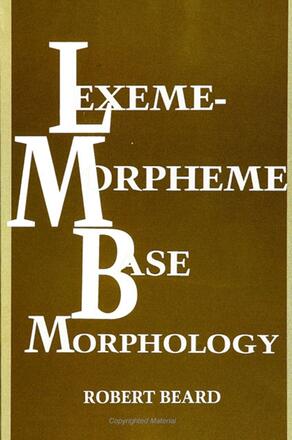
Lexeme-Morpheme Base Morphology
A General Theory of Inflection and Word Formation
Alternative formats available from:
This is the first complete theory of the morphology of language, a compendium of information on morphological categories and operations.
Description
This book is the first complete theory of the morphology of language. It describes both inflection and lexical word formation, their relation to syntax, phonology, and semantics, and to each other. It enumerates most of the morphological categories of the world's languages, describing their recombinant abilities, and how they are realized in inflectional and lexical derivations.
Robert Beard is the Director of the Linguistics Program at Bucknell University.
Reviews
"Beard tackles an important but long neglected issue in morphological theory: whether there are any general linguistic constraints on the meaning which morphological processes (whether derivational or inflectional) can express, and if so, what the relationship is between possible derivational and possible inflectional meanings. He offers precise answers to these questions, arguing for strong constraints. He also offers an account of the relationship between form and content in affixal morphology from which it emerges as quite natural that there should be widespread mismatches, in contrast to the corresponding relationship for lexical stems." -- Andrew Carstairs-McCarthy, University of Canterbury, New Zealand